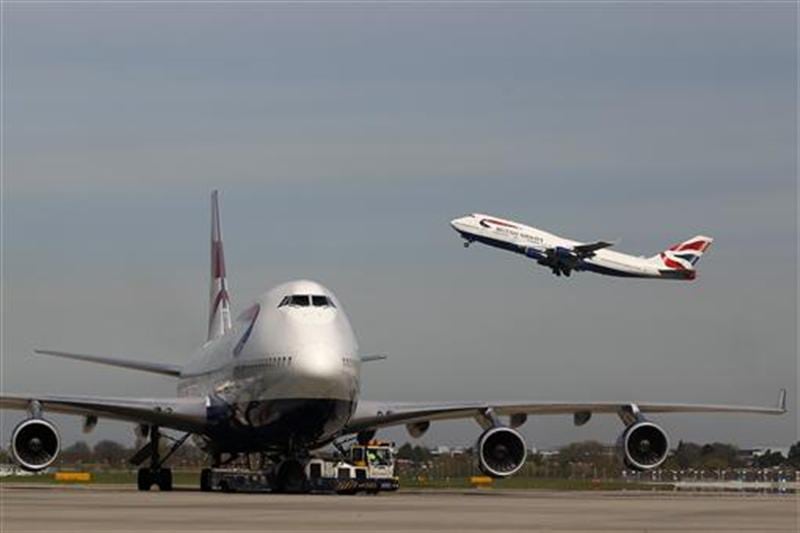Skift Take
As London's airports flail, it's competitors move forward with plans that could soon make Heathrow's third runway debate meaningless.
London’s top three airports are facing the biggest regulatory shake-up for a quarter of a century, with the Civil Aviation Authority (CAA) poised to introduce different pricing regimes at each of Heathrow, Gatwick and Stansted.
In a radical departure, the CAA is looking to replace the outmoded regulatory formula at Stansted and give Gatwick more freedom to strike commercial deals. The regulator is also expected to force Heathrow to cut planned hikes to landing charges of 5.9pc a year above inflation that have enraged the airlines.
The regulatory changes could unleash lower fares, though the CAA is mindful of the need to encourage airport investment.
The CAA will unveil its initial thoughts on April 30 for maximum landing charges per passenger at Britain’s three regulated airports for the next five-year period starting in April next year.
This sixth regulatory period marks a crucial split with the past, however, because it is the first time that all three airports are in different hands following the forced break-up of the BAA monopoly.
BAA, which is now renamed Heathrow, sold Gatwick to Global Infrastructure Partners for £1.5bn in 2009, while in January it offloaded Stansted to Manchester Airports Group for a similar sum.
Changes of ownership have coincided with a new licensing regime for UK regulated airports that has, sources say, allowed the CAA to abandon its previous “one-size-fits-all regulation”.
An added complication is the review by the Davies Commission into UK hub airport capacity, where any “game-changing” decision in 2015 would force the CAA to revisit its pricing proposals.
At Stansted, the CAA is considering exempting the airport from the industry-wide pricing formula based on a “regulated asset base” (RAB) – the regulator’s proxy for an airport’s value – which rises in line with investment in new facilities, such as terminals and runways.
Michael O’Leary, chief executive of Ryanair, which is responsible for 70pc of Stansted’s traffic, has long complained that RAB-based regulation encourages “gold-plating”. He argues that the current regime gives airport operators an incentive to build “Taj Mahal” facilities on the basis that the more they spend the more the regulator lets them charge per passenger.
He is also livid that Stansted’s £1.3bn RAB is inflated by £156m of costs associated with the abortive plans to build a second runway at the airport.
The CAA would acknowledge Stansted’s facilities do not reflect its low-fare customer base but is balking at calls from Mr O’Leary to cut the airport’s RAB to between £700m and £800m and base charges on that.
Instead it is looking at alternative formulas. These include benchmarking charges against those at similar European airports or removing price caps altogether and simply monitoring any above-inflation rises. The CAA would then intervene to settle disputes.
The latter approach, similar to the one used in Australia, could pave the way for Ryanair to strike a long-term deal with Stansted’s new owners over the charges.
Freedom to strike similar deals could also underpin the new model for Gatwick, which wants to be removed from the CAA’s pricing regime.
Gatwick chief executive Stewart Wingate has claimed that charges would be lower if it was free to strike commercial deals with major customers such as easyJet. One industry source said: “The CAA is likely to call for them to prove it, while remaining as a regulatory backstop. It’s not going to turn down a 10-year deal that’s in everyone’s interests.”
Only at capacity-constrained Heathrow is the current top-down, RAB-based formula likely to remain.
Heathrow has infuriated airlines with plans to raise charges per passenger from £21.96 to £27.30 over the next five-year period, which it claims are necessary to support a £3bn investment programme – less than £11bn invested over the past decade that included building Terminal 5.
It says its proposals “strike the right balance between continuing to invest for passengers and keeping charges at a level that is affordable for airlines”.
But the carriers are up in arms. The CAA is expected to force Heathrow to cut its proposed price hikes, though by how much is unclear.
The CAA’s April 30 announcement is expected to trigger intense lobbying by airports and airlines over the regime for Heathrow, Gatwick and Stansted. It will make its final decision in January.
![]()
The Daily Newsletter
Our daily coverage of the global travel industry. Written by editors and analysts from across Skift’s brands.
Have a confidential tip for Skift? Get in touch
Tags: gatwick, lhr, london, stansted
Photo credit: A British Airways passenger jet takes off from Heathrow Airport in west London. Stefan Wermuth / Reuters
